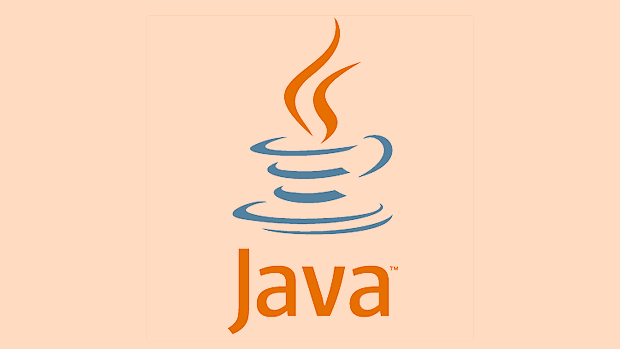Thread Safety in Java: A Guide to `volatile` and `synchronized`
Jul 30, 2025 am 02:43 AMBoth volatile and synchronized solve thread safety problems in Java, but their functions are different: 1. volatile ensures the visibility of variables, ensures that read and write directly interact with the main memory under multi-threading, and is suitable for single-time read and write scenarios such as status flags, but does not provide atomicity; 2. synchronized provides atomicity and visibility, and ensures that only one thread executes code block at the same time through mutex locks, which is suitable for composite operations such as count; 3. volatile cannot replace synchronized, and for non-atomic operations, synchronized or concurrent tool classes such as AtomicInteger are still required. Correct selection of tools can ensure thread safety and efficiency.

In Java, thread safety is critical when multiple threads access shared data. Without proper synchronization, programs can exhibit unpredictable behavior due to race conditions, visibility issues, and inconsistent state. Two key tools for managing thread safety are volatile and synchronized . While both help with concurrency, they serve different purposes and are not interchangeable.

Let's break down how each works, when to use them, and what problems they solve.
What Is the volatile Keyword?
The volatile keyword ensures visibility of changes to variables across threads. When a variable is declared volatile , it tells the JVM:

- Writes to this variable are immediately flushed to main memory.
- Reads of this variable always come from main memory, not from a thread's local cache.
This prevents threads from using stale cached values — a common issue in multi-threaded environments.
Example: Using volatile
public class VolatileExample {
private volatile boolean running = true;
public void stop() {
running = false;
}
public void run() {
while (running) {
// do work
}
System.out.println("Stopped");
}
} In this example, one thread calls run() and another calls stop() . Without volatile , the run() thread might never see the updated value of running because it could be cached in CPU memory. With volatile , the change is guaranteed to be visible.

When to Use volatile
Use volatile when:
- The variable is read and written by multiple threads.
- The variable does not depend on its previous value (ie, no compound operations like
count). - You only need visibility , not atomicity.
? Don't use
volatilefor operations likex— they are not atomic even if the variable is volatile.
What Is the synchronized Keyword?
synchronized provides both mutual exclusion (only one thread can execute the block/method at a time) and visibility (changes made inside the synchronized block are visible to other threads).
It can be applied to:
- Instance methods (locks on the instance)
- Static methods (locks on the class object)
- Code blocks (with a specified lock object)
Example: Using synchronized
public class Counter {
private int count = 0;
public synchronized void increment() {
count ; // atomic operation due to synchronization
}
public synchronized int getCount() {
return count;
}
} Here, synchronized ensures that only one thread can execute increment() or getCount() at a time, preventing race conditions on count .
How synchronized Ensures Visibility
When a thread enters a synchronized block, it acquires the monitor lock and:
- Flushes its local cache.
- Reloads variables from main memory.
When it exits, it writes changes back to main memory. So, like volatile , it guarantees visibility — but with added atomicity.
Key Differences: volatile vs synchronized
| Feature | volatile | synchronized |
|---|---|---|
| Atomicity | No (only for single read/write) | Yes (entire block/method) |
| Visibility | Yes | Yes |
| Mutual Exclusion | No | Yes |
| Performance | Lightweight | Heavier (monitor locking) |
| Applicable to | Variables only | Methods and code blocks |
Common Pitfalls and Best Practices
- ? Use
volatilefor state flags (eg,shutdownRequested,initialized). - ? Use
synchronizedwhen you need atomicity (eg, incrementing, updating multiple variables). - ? Don't assume
volatilemakes compound operations safe. - ? Avoid overusing
synchronized— it can cause contention and reduce performance.
Example: Why volatile Isn't Enough for count
public class BadCounter {
private volatile int count = 0;
public void increment() {
count ; // Not atomic: read, increment, write
}
} Even though count is volatile , count involves three steps. Two threads could read the same value, leading to lost updates. You need synchronized or AtomicInteger .
Alternatives: AtomicInteger , ReentrantLock , etc.
For better performance and flexibility, consider:
-
AtomicInteger,AtomicLong, etc. — provide atomic operations without blocking. -
java.util.concurrent.locks.ReentrantLock— more control thansynchronized.
Example with AtomicInteger :
private AtomicInteger count = new AtomicInteger(0);
public void increment() {
count.incrementAndGet(); // thread-safe and efficient
}Summary
- Use
volatilefor simple shared flags where you need visibility but not atomicity. - Use
synchronizedwhen you need both atomicity and visibility , especially for compound operations. - Understand that
volatiledoesn't replacesynchronized— they solve different parts of the concurrency puzzle.
Thread safety isn't just about preventing crashes — it's about ensuring correctness under concurrent access. Choosing the right tool ( volatile , synchronized , or atomic classes) makes your code both safe and efficient.
The above is the detailed content of Thread Safety in Java: A Guide to `volatile` and `synchronized`. For more information, please follow other related articles on the PHP Chinese website!

Hot AI Tools

Undress AI Tool
Undress images for free

Undresser.AI Undress
AI-powered app for creating realistic nude photos

AI Clothes Remover
Online AI tool for removing clothes from photos.

Clothoff.io
AI clothes remover

Video Face Swap
Swap faces in any video effortlessly with our completely free AI face swap tool!

Hot Article

Hot Tools

Notepad++7.3.1
Easy-to-use and free code editor

SublimeText3 Chinese version
Chinese version, very easy to use

Zend Studio 13.0.1
Powerful PHP integrated development environment

Dreamweaver CS6
Visual web development tools

SublimeText3 Mac version
God-level code editing software (SublimeText3)

Hot Topics
 What is the `enum` type in Java?
Jul 02, 2025 am 01:31 AM
What is the `enum` type in Java?
Jul 02, 2025 am 01:31 AM
Enums in Java are special classes that represent fixed number of constant values. 1. Use the enum keyword definition; 2. Each enum value is a public static final instance of the enum type; 3. It can include fields, constructors and methods to add behavior to each constant; 4. It can be used in switch statements, supports direct comparison, and provides built-in methods such as name(), ordinal(), values() and valueOf(); 5. Enumeration can improve the type safety, readability and flexibility of the code, and is suitable for limited collection scenarios such as status codes, colors or week.
 What is the interface segregation principle?
Jul 02, 2025 am 01:24 AM
What is the interface segregation principle?
Jul 02, 2025 am 01:24 AM
Interface Isolation Principle (ISP) requires that clients not rely on unused interfaces. The core is to replace large and complete interfaces with multiple small and refined interfaces. Violations of this principle include: an unimplemented exception was thrown when the class implements an interface, a large number of invalid methods are implemented, and irrelevant functions are forcibly classified into the same interface. Application methods include: dividing interfaces according to common methods, using split interfaces according to clients, and using combinations instead of multi-interface implementations if necessary. For example, split the Machine interfaces containing printing, scanning, and fax methods into Printer, Scanner, and FaxMachine. Rules can be relaxed appropriately when using all methods on small projects or all clients.
 Asynchronous Programming Techniques in Modern Java
Jul 07, 2025 am 02:24 AM
Asynchronous Programming Techniques in Modern Java
Jul 07, 2025 am 02:24 AM
Java supports asynchronous programming including the use of CompletableFuture, responsive streams (such as ProjectReactor), and virtual threads in Java19. 1.CompletableFuture improves code readability and maintenance through chain calls, and supports task orchestration and exception handling; 2. ProjectReactor provides Mono and Flux types to implement responsive programming, with backpressure mechanism and rich operators; 3. Virtual threads reduce concurrency costs, are suitable for I/O-intensive tasks, and are lighter and easier to expand than traditional platform threads. Each method has applicable scenarios, and appropriate tools should be selected according to your needs and mixed models should be avoided to maintain simplicity
 Differences Between Callable and Runnable in Java
Jul 04, 2025 am 02:50 AM
Differences Between Callable and Runnable in Java
Jul 04, 2025 am 02:50 AM
There are three main differences between Callable and Runnable in Java. First, the callable method can return the result, suitable for tasks that need to return values, such as Callable; while the run() method of Runnable has no return value, suitable for tasks that do not need to return, such as logging. Second, Callable allows to throw checked exceptions to facilitate error transmission; while Runnable must handle exceptions internally. Third, Runnable can be directly passed to Thread or ExecutorService, while Callable can only be submitted to ExecutorService and returns the Future object to
 Best Practices for Using Enums in Java
Jul 07, 2025 am 02:35 AM
Best Practices for Using Enums in Java
Jul 07, 2025 am 02:35 AM
In Java, enums are suitable for representing fixed constant sets. Best practices include: 1. Use enum to represent fixed state or options to improve type safety and readability; 2. Add properties and methods to enums to enhance flexibility, such as defining fields, constructors, helper methods, etc.; 3. Use EnumMap and EnumSet to improve performance and type safety because they are more efficient based on arrays; 4. Avoid abuse of enums, such as dynamic values, frequent changes or complex logic scenarios, which should be replaced by other methods. Correct use of enum can improve code quality and reduce errors, but you need to pay attention to its applicable boundaries.
 Understanding Java NIO and Its Advantages
Jul 08, 2025 am 02:55 AM
Understanding Java NIO and Its Advantages
Jul 08, 2025 am 02:55 AM
JavaNIO is a new IOAPI introduced by Java 1.4. 1) is aimed at buffers and channels, 2) contains Buffer, Channel and Selector core components, 3) supports non-blocking mode, and 4) handles concurrent connections more efficiently than traditional IO. Its advantages are reflected in: 1) Non-blocking IO reduces thread overhead, 2) Buffer improves data transmission efficiency, 3) Selector realizes multiplexing, and 4) Memory mapping speeds up file reading and writing. Note when using: 1) The flip/clear operation of the Buffer is easy to be confused, 2) Incomplete data needs to be processed manually without blocking, 3) Selector registration must be canceled in time, 4) NIO is not suitable for all scenarios.
 Exploring Different Synchronization Mechanisms in Java
Jul 04, 2025 am 02:53 AM
Exploring Different Synchronization Mechanisms in Java
Jul 04, 2025 am 02:53 AM
Javaprovidesmultiplesynchronizationtoolsforthreadsafety.1.synchronizedblocksensuremutualexclusionbylockingmethodsorspecificcodesections.2.ReentrantLockoffersadvancedcontrol,includingtryLockandfairnesspolicies.3.Conditionvariablesallowthreadstowaitfor
 How Java ClassLoaders Work Internally
Jul 06, 2025 am 02:53 AM
How Java ClassLoaders Work Internally
Jul 06, 2025 am 02:53 AM
Java's class loading mechanism is implemented through ClassLoader, and its core workflow is divided into three stages: loading, linking and initialization. During the loading phase, ClassLoader dynamically reads the bytecode of the class and creates Class objects; links include verifying the correctness of the class, allocating memory to static variables, and parsing symbol references; initialization performs static code blocks and static variable assignments. Class loading adopts the parent delegation model, and prioritizes the parent class loader to find classes, and try Bootstrap, Extension, and ApplicationClassLoader in turn to ensure that the core class library is safe and avoids duplicate loading. Developers can customize ClassLoader, such as URLClassL






